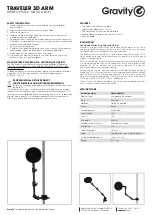
Lake Shore Model 475 Gaussmeter User’s Manual
Remote Operation
6-5
6.1.4
Status System
6.1.4.1
Overview
The Model 475 implements a status system compliant to the IEEE 488.2 – 1992 standard. The status system provides a
method of recording and reporting instrument information and is typically used to control the Service Request (SRQ)
interrupt line. A diagram of the status system is shown in Figure 6-2. The status system is made up of register sets, the
Status Byte register, and the Service Request Enable register. Each register set consists of three types of registers,
condition, event, and enable.
6.1.4.1.0 Condition Registers
Each register set (except the Standard Event Register set) includes a condition register as shown in Figure 6-2. The
condition register constantly monitors the instrument status. The data bits are real-time and are not latched or buffered.
The register is read-only.
6.1.4.1.1 Event Registers
Each register set includes an event register as shown in Figure 6-2. Bits in the event register correspond to various
system events and latch when the event occurs. When an event bit is set, subsequent events corresponding to that bit are
ignored. Set bits remain latched until the register is cleared by a query command (such as *ESR?) or a *CLS command.
The register is read-only.
6.1.4.1.2 Enable Registers
Each register set includes an enable register as shown in Figure 6-2. An enable register determines which bits in the
corresponding event register will set the summary bit for the register set in the Status Byte. The user may write to or read
from an enable register. Each event register bit is logically ANDed to the corresponding enable bit of the enable register.
When an enable register bit is set by the user, and the corresponding bit is set in the event register, the output (summary)
of the register will be set, which in turn sets the summary bit of the Status Byte register.
6.1.4.1.3 Status Byte Register
The Status Byte register, typically referred to as simply the Status Byte, is a non-latching, read-only register that contains
all of the summary bits from the register sets. The status of the summary bits are controlled from the register sets as
explained above. The Status Byte also contains the Request for Service (RQS)/Master Summary Status (MSS) bit. This
bit is used to control the Service Request hardware line on the bus and to report if any of the summary bits are set via the
*STB? command. The status of the RQS/MSS bit is controlled by the summary bits and the Service Request Enable
Register.
6.1.4.1.4 Service Request Enable Register
The Service Request Enable Register determines which summary bits in the Status Byte will set the RQS/MSS bit of the
Status Byte. The user may write to or read from the Service Request Enable Register. Each Status Byte summary bit is
logically ANDed to the corresponding enable bit of the Service Request Enable Register. When a Service Request enable
register bit is set by the user, and the corresponding summary bit is set in the Status Byte, the RQS/MSS bit of the Status
Byte will be set, which in turn sets the Service Request hardware line on the bus.
Содержание 475
Страница 16: ...Lake Shore Model 475 Gaussmeter User s Manual 1 6 Introduction 1 4 SAFETY SYMBOLS ...
Страница 25: ...Lake Shore Model 475 Gaussmeter User s Manual Background 2 9 Figure 2 8 Examples of PI Control ...
Страница 36: ...Lake Shore Model 475 Gaussmeter User s Manual 3 10 Installation This Page Intentionally Left Blank ...
Страница 68: ...Lake Shore Model 475 Gaussmeter User s Manual 4 32 Operation This Page Intentionally Left Blank ...
Страница 82: ...Lake Shore Model 475 Gaussmeter User s Manual 6 6 Remote Operation Figure 6 2 Model 475 Status System ...
















































